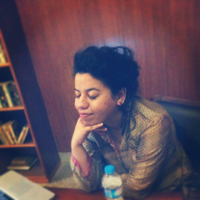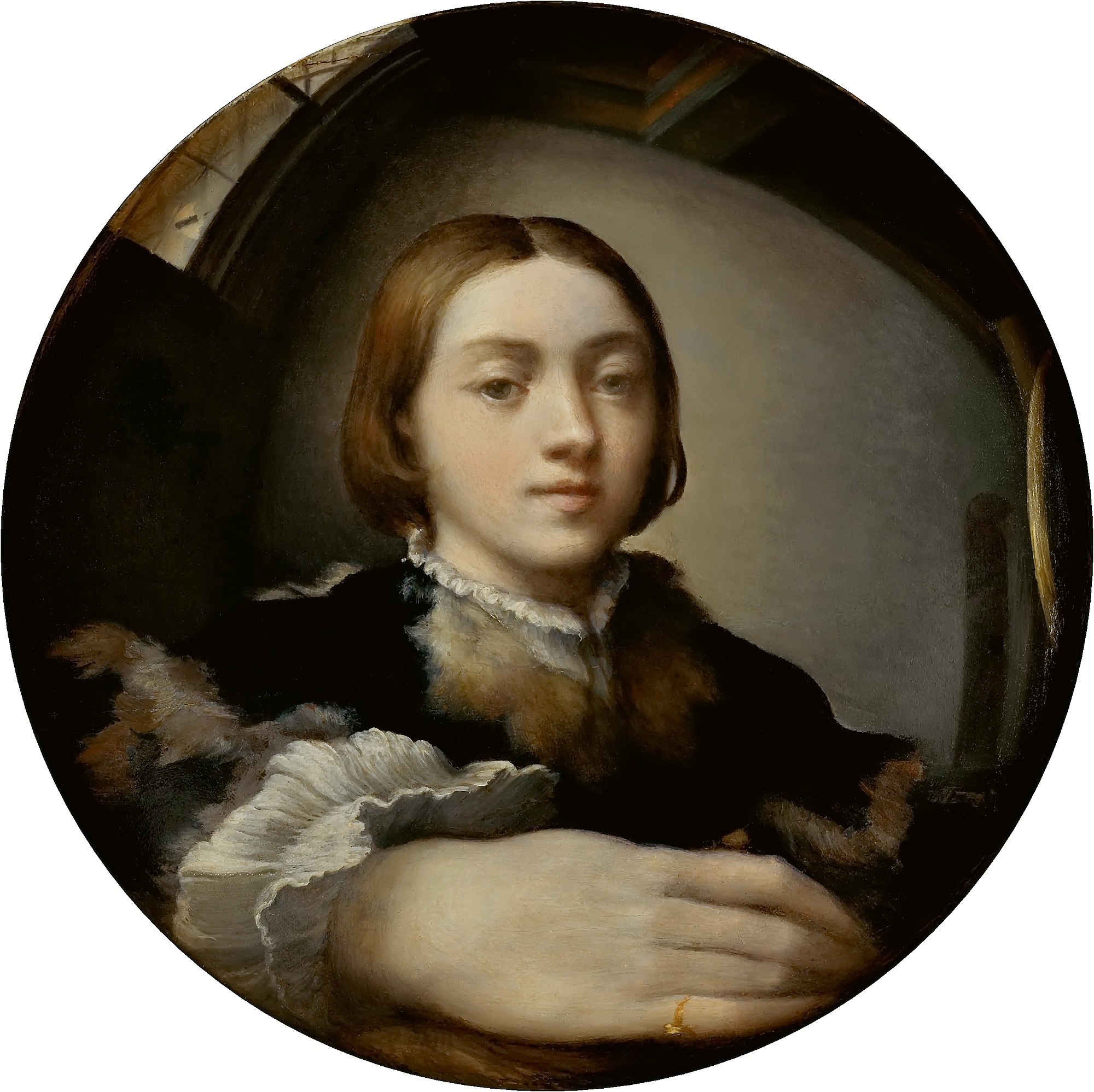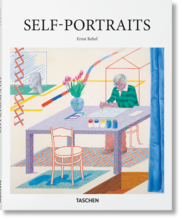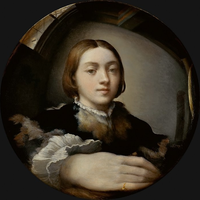More about Parmigianino
- All
- Info
- Shop
Works by Parmigianino

Contributor
Parmigianino, also known as Girolamo Francesco Maria Mazzola, was one of the first artists to know how to accurately paint the human body and completely disregard this knowledge.
Born in 1503 in Parma, Italy to a painter father, Parmigianino (a nickname translating to “the little one from Parma”) was never not going to be a painter. Even when his father died when Parmigianino was two years old, he was taken in by his painter uncles, who inspired his practice. By the time he was eighteen, he had already created a few of his most famous paintings, including the Bardi Altarpiece, which is now in the church of Santa Maria at Bardi, Emilia-Romagna, Italy. And then it was time for little Parmi to hit the big city, so he packed his bags and went to Rome in 1524. This was the 16th century version of going to New York, but since New York was not really a thing at this point, Rome was the place for young, aspiring artists to learn from legends like Raphael and Michelangelo and take their own shot at fame and fortune.
Parmi had a good three years in Rome during which time he presented his Self-Portrait in a Convex Mirror to the Papal court with the intention of winning commissions. Hailed 'Raphael reborn,' he was met with success. But in 1527, the Sack of Rome happened and Parmi was forced to flee. He went back to his old stomping grounds in Parma and was hailed a hero of the arts. He got all the commissions but started to work slower and slower as his interest in alchemy (the quest to find the elixir of youth, a universal solvent, and “methods for transmuting baser metals into gold”) began to wax obsessive. Eventually he had procrastinated on a project for a church so severely that he was imprisoned for breach of contract. He was in jail for eight years, escaped and lived out his last year of life in exile in Lombardy before a “severe fever” took his life.
He was only 37, but his legacy in the art world was great. He had begun Mannerism, a movement that took place in the Late Renaissance. It centered around disregarding the perfection of figures made by Michelangelo and Raphael and making figures that have “graceful but queerly elongated limbs, small heads, and stylized facial features, while their poses seem difficult or contrived.” They were creepy and a little off-putting, but this was the gateway to harder movements like Baroque and neo-Mannerism as exemplified by our friend John Currin. Overall, Parmi was incredibly talented, and maybe even a genius, but what solidified his legacy of badassery was his straying from the Dumbledore of the art world, Michelangelo, and creating something completely original.
Sources
- "Mannerism | Art." Encyclopedia Britannica. Web. 23 Apr. 2018.
- Morris, Roderick Conway. "The Glories Of Two Parma Masters." Nytimes.com. N.p., 2016. Web. 23 Apr. 2018.
- "Parmigianino." Artble. N.p., 2018. Web. 23 Apr. 2018.
- "Parmigianino | Italian Artist." Encyclopedia Britannica. N.p., 2014. Web. 23 Apr. 2018.
- Schjeldahl, Peter. "Out Of Time | The New Yorker." Newyorker.com. N.p., 2004. Web. 23 Apr. 2018.
- "The Definition Of Alchemy." Dictionary.com. Web. 23 Apr. 2018.

Contributor
I know what you’re thinking... Parmigianino sounds like a fancy cheese.
Even though Parmigianino and Parmesan cheese both hail from the same hometown, there’s only so much the latter has done for art. His real name was Girolamo Francesca Mario Mazzola (quite a mouthful), but he was called Parmigianino, which meant “the little one from Parma.”
Parmigianino was a fan of magic. So since there were no "Harry Potter" books around that time, Parmigianino got into the Hogwarts School of Alchemy instead. Lolz, jk. But he was definitely fascinated by alchemy. And because he was busy dabbling around in the dark arts of science a lot, he ended up getting banned regularly from working for the local church and even ended up with a brief stint in prison. Never a good idea to make enemies with the church!
And when Parmigianino wasn’t up to his alchemist antics, he would be painting. He was a bit of a bad boy in the painting world…he swooped in with a whole brand spanking new painting style right after the Renaissance! I’m pretty sure everyone was like, “Well, that’s that. We don’t need to try anything more with painting now that da Vinci and his crew have perfected naturalism.” But in came Parmigianino, with a movement called Mannerism that had some pretty daring ideas…mainly his lust for elongating limbs and body parts of his figurative subjects, which you can check out in his Madonna with the Long Neck. He also tried out a new technique: painting a self-portrait reflected in a convex mirror on a convex piece of wood, which you can see here! Show-off!!
Featured Content
Here is what Wikipedia says about Parmigianino
Girolamo Francesco Maria Mazzola (11 January 1503 – 24 August 1540), also known as Francesco Mazzola or, more commonly, as Parmigianino (
UK: /ˌpɑːrmɪdʒæˈniːnoʊ/,
US: /-dʒɑːˈ-/,
Italian: [parmidʒaˈniːno]; "the little one from Parma"), was an Italian Mannerist painter and printmaker active in Florence, Rome, Bologna, and his native city of Parma. His work is characterized by a "refined sensuality" and often elongation of forms and includes Vision of Saint Jerome (1527) and the iconic if somewhat anomalous Madonna with the Long Neck (1534), and he remains the best known artist of the first generation whose whole careers fall into the Mannerist period.
His prodigious and individual talent has always been recognised, but his career was disrupted by war, especially the Sack of Rome in 1527, three years after he moved there, and then ended by his death at 37. He produced outstanding drawings, and was one of the first Italian painters to experiment with printmaking himself. While his portable works have always been keenly collected and are now in major museums in Italy and around the world, his two large projects in fresco are in a church in Parma and a palace in a small town nearby. This in conjunction with their lack of large main subjects has resulted in their being less well known than other works by similar artists. He painted a number of important portraits, leading a trend in Italy towards the three-quarters or full-length figure, previously mostly reserved for royalty.
Check out the full Wikipedia article about Parmigianino


















